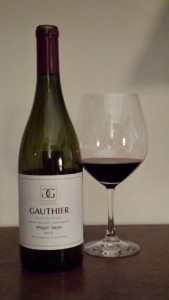In the late 1970’s, when wine tasting in California first became popular (or at least when we first experienced wine tasting in Napa Valley) the pours were served in tiny glasses, about four inches high with a bowl the size of a small tangerine. They were thick and heavy for a small glass and the wineries gave them away. Those were the days when the winemakers were happy that anyone was paying serious attention to their products at all. Somewhat thereafter, the wineries would buy glasses with their logos inscribed on them and they would still give them away. The tastings were free in those days, too.
Over time, there was a charge for the tastings and the wine glasses became larger and thinner. Some wineries still give them away with the tasting but don’t expect it. In more recent years, the glass only came with the reserve tastings (i.e., expensive) until today there are only a handful of wineries that give away glasses at all. Among them are Caymus in Rutherford and Silver Oak and its sister winery, Twomey in both Napa and Sonoma. Tablas Creek in Paso Robles and Steele in Lake county still do so as well. There are a few others, but even the ones that gave glasses even a few years ago no longer offer them.
We would not recommend that anyone go to a winery just to collect stemware. The wineries mentioned here are well worth a visit for the quality of the wine, which of course is the prime reason for going wine tasting at all. Nonetheless, souvenir glasses are fun to collect for some people, and if you are one of them you can usually buy engraved glasses at the winery. This raises two questions: how do you get them home, especially if you are flying, and what do you do with them once you get home?
The glasses you get at wineries today are usually of fine quality, with large tulip shaped bowls made of fine, thin crystal. The glasses are often from some of the most famous crystal-makers, including Riedel and Schott Zweizel and have no beads. (The bead is the rounded edge at the rim of a wine glass. The finer the glass, the thinner the bead and the best have no bead at all.)
The problem, of course, is that fine crystal is very delicate. Many of the wineries will wrap the glasses in tissue paper and give each glass to you in a paper bag. We recommend that you bring bubble wrap or envelop the glasses in your clothing. Still, there’s no guarantee that they will arrive intact. If you buy a set of glasses, the wineries will usually have a box for them, thereby avoiding the problem.
Over the years, we have collected many souvenir wine glasses. In our second home, we have enough that we can set a table for maybe as many as sixteen people, although we don’t have a table that big. In our New York home, we use the souvenir glasses for our everyday wines, reserving our finer crystal for our best wines. The engraved glasses are great for parties, since people can recognize their own glasses by the name of the vineyard. When we have two of a certain winery’s glasses, we give them to couples.
So in sum, don’t go wine tasting just to collect glassware, but if they give you glasses, enjoy them. And if you particularly like a glass and want a souvenir where they don’t give them away, buy them.
